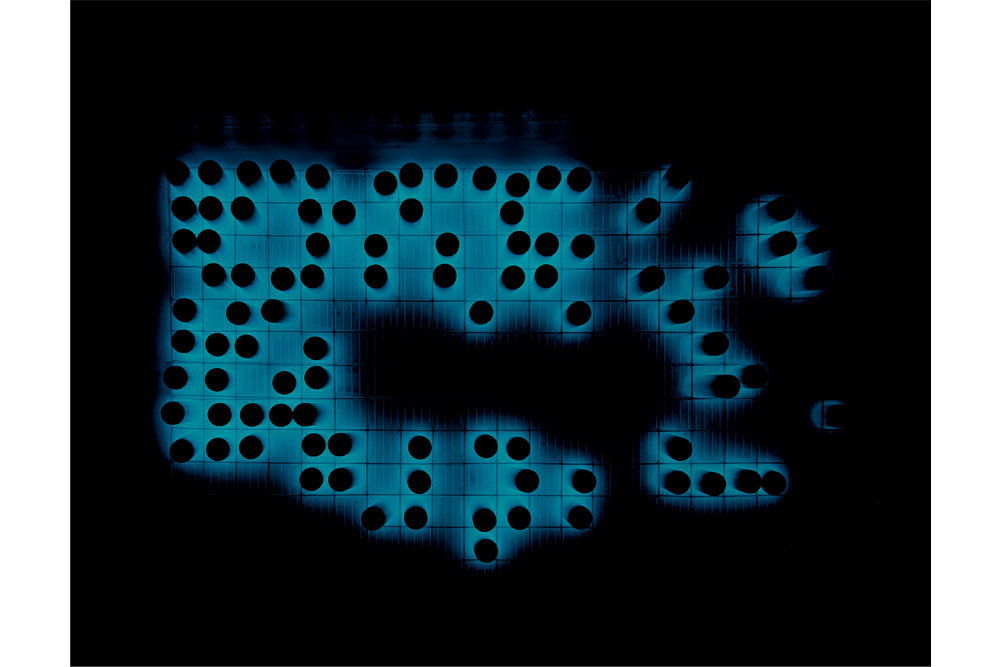Taryn Simon’s work depends on access. Many of her heavily researched projects would be inconceivable without her ability to work her way into the most private and unexplored spaces—from nuclear-waste storage facilities to the art collection of the CIA. In her consideration of the photograph’s ability to mediate fact and fiction, Simon is as much a secret agent as she is an artist.
“In a historical period in which many people are making such great efforts to conceal the truth from the mass of the people, an artist like Taryn Simon is an invaluable counter-force,” writes Salman Rushdie in the catalogue for her installation “An American Index of the Hidden and Unfamiliar” at the Whitney Museum of American Art. “Democracy needs visibility, accountability, light…. Somehow, Simon has persuaded a good few denizens of hidden worlds not to scurry for shelter when the light is switched on, as cockroaches and vampires do, but to pose proudly for her invading lens.”
This ability, and the insight that it allows, has brought Simon widespread attention and acclaim. Recent shows include this year’s Venice Biennale; the Museum of Modern Art, New York (2012); the Tate Modern, London (2011); and the Neue Nationalgalerie, Berlin (2011). Her work is included in the collections of the Metropolitan Museum of Art, the Guggenheim Museum, the Centre Georges Pompidou, the Los Angeles County Museum of Art and the National Gallery of Canada, among others.
In advance of Simon’s talks in Montreal on December 8, Ottawa on December 9 and Toronto on December 11 for the Canadian Art Encounters: International Artists Series, we’ve gathered together some highlights of her detailed, subversive practice.
An American Index of the Hidden and Unfamiliar (2007)
Likely Simon’s best-known work, An American Index of the Hidden and Unfamiliar captures spaces that are out of bounds for most citizens of the United States of America, but foundational to or interwoven with the country’s identity. The subjects of Simon’s investigations range from radioactive capsules at a nuclear waste storage facility to a black bear in hibernation, and she presents her subjects through her correspondence with them and photography.
A Living Man Declared Dead and Other Chapters (2008–11)
A similarly sprawling collection of research, A Living Man Declared Dead and Other Chapters was created when Simon began researching various bloodlines, including all living forebears and descendants, of a single man or woman. These bloodlines included “feuding families in Brazil, victims of genocide in Bosnia, the body double of Saddam Hussein’s son Uday, and the living dead in India.” The exhibition then featured photographs of the members of the bloodlines, a central text panel with details of each bloodline narrative and a final portion that presents miscellaneous evidence. It’s a careful parsing of the most precious and painful aspects of filial ties.
Picture Collection (2012)
Picture Collection was largely inspired by the New York Public Library’s picture archive, which contains 1.2 million images. On the heels of creating Image Atlas, a website that aggregated top image-search results based on geographic categories, with programmer Aaron Swartz, Simon’s Picture Collection similarly draws on the archiving and organization of visual information. The project features 44 works, which each collect numerous images from various archival categories, including “financial panics,” “Israel” and “beards and mustaches.”
A Polite Fiction (2014)
A Polite Fiction offers a mapping of another kind. Rather than the usual elements of a building map, Simon studied the five-year construction of the Louis Vuitton Foundation, designed by Frank Gehry to house the collection of billionaire Bernard Arnault and LVMH, and began recording the subversive gestures of the various construction workers and individuals opposed to the building. These include an almost-emptied cigarette box behind drywall in a stairwell, a newspaper with stories of the murder of political activists stashed in a ceiling and a small fortune worth of copper and aluminum cables that workers sold to scrap dealers (a “petit bonus”) during the construction.









